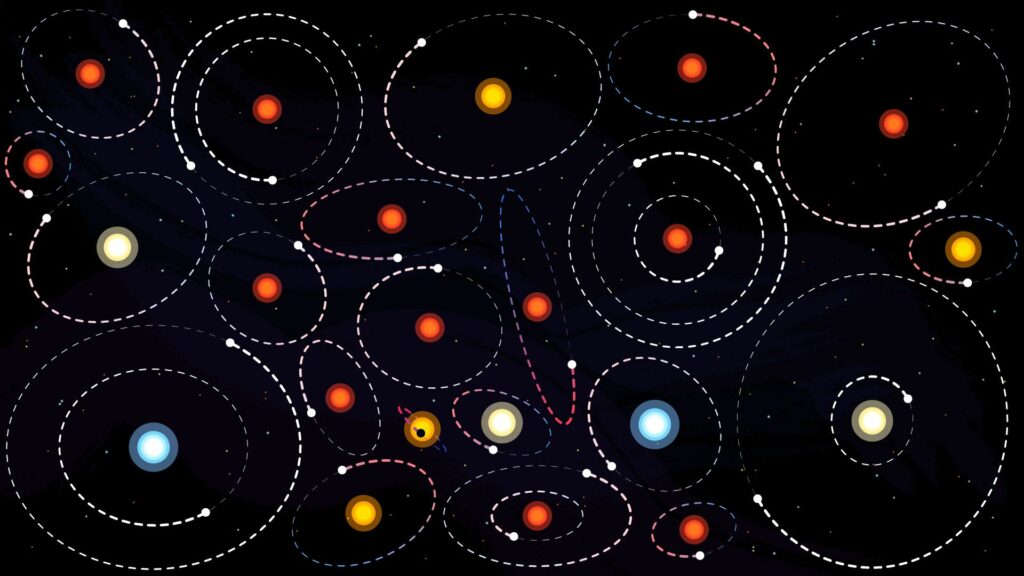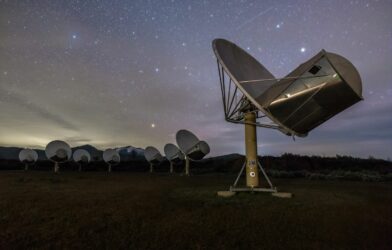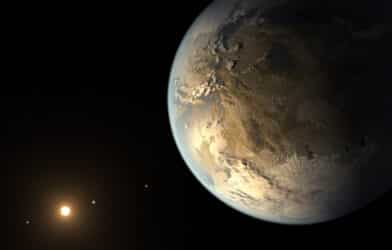There’s now a new way to search for radio technosignatures. Scientists from the Search for Extraterrestrial Intelligence (SETI) Institute have redefined the criteria for detecting potential signals from extraterrestrial intelligences (ETIs) by examining the characteristics of exoplanets. The study’s findings will have have profound implications for the SETI field and may significantly enhance its efficiency.
Previously, researchers relied on a threshold “drift rate” of 200 nHz to identify signals caused by a planet’s motion around its host star. However, scientists discovered that a much lower threshold of 53 nHz suffices in 99 percent of cases involving known exoplanets. Furthermore, this value drops even further to a mere 0.44 nHz for stars without known planets. These revised drift rate thresholds promise substantial computational savings and increased efficiency for future SETI campaigns.
“This work gives deeper insight into what extraterrestrially transmitted signals may look like if they come from exoplanets, informing not only the parameter space of technosignature searches but also possible interpretations of detected signals,” says Megan Grace Li, a PhD student at UCLA SETI, in a media release.
The Role of the Doppler Effect in SETI
To understand the study’s implications, it’s important to grasp the concept of the Doppler effect. This effect causes a radio signal from a distant exoplanet to appear at a higher or lower frequency when observed from Earth, depending on the relative motion of the two celestial bodies. Imagine the changing pitch of an ambulance siren as it approaches and then moves away. This phenomenon is similar to the frequency shift observed in radio signals from exoplanets.
When conducting SETI searches for radio signals from exoplanets, researchers must consider various factors affecting this drift rate. These factors encompass the exoplanet’s orbit, rotation, as well as the Earth’s orbit and rotation.
In the first part of the study, Li focused on over 5,300 known exoplanets from the NASA Exoplanet Archive (NEA). She calculated the orbital drift rate distributions for these exoplanets, creating a tool for researchers to quickly estimate expected drift rates for any exoplanetary system. Ninety-nine percent of the total drift rate distribution fell within the much lower value of 53 nHz.
Dr. Sofia Sheikh, an NSF MPS-ASCEND Postdoctoral Fellow at the SETI Institute, collaborated with Li and co-authored the study. Dr. Sheikh’s earlier research had established a threshold of 200 nHz for drift rates based on extreme cases in exoplanetary systems. Li’s work builds upon this foundation by considering both maximum drift rates from extreme systems and the average or most likely drift rates from all known systems.
“These results imply that, in many cases, the drift rate will be so low that we can prioritize other parameters (such as covering more frequencies or analyzing datasets faster) without worrying that we will miss true signals,” notes Dr. Sheikh.
In essence, this discovery allows for the reduction of unnecessary computations in SETI searches.
Refining Searches with ‘De-Biased’ Exoplanet Populations
In the second part of the study, Li simulated “de-biased” populations of exoplanets to better represent exoplanetary characteristics across the galaxy. This goes beyond the limited sample of exoplanets that are most easily detectable due to their “edge-on” orbits. The results show that a drift rate of just 0.44 nHz for any random star would capture 99 percent of hypothetical signals from any orbiting exoplanets.
This research substantially narrows the range of maximum drift rates, resulting in a remarkable efficiency gain in the quest to detect potential radio signals from technologically capable extraterrestrial life. Future SETI scientists will be able to fine-tune their searches with greater precision to match the specific systems they are observing, thanks to these redefined parameters.
The study is published in The Astronomical Journal.












